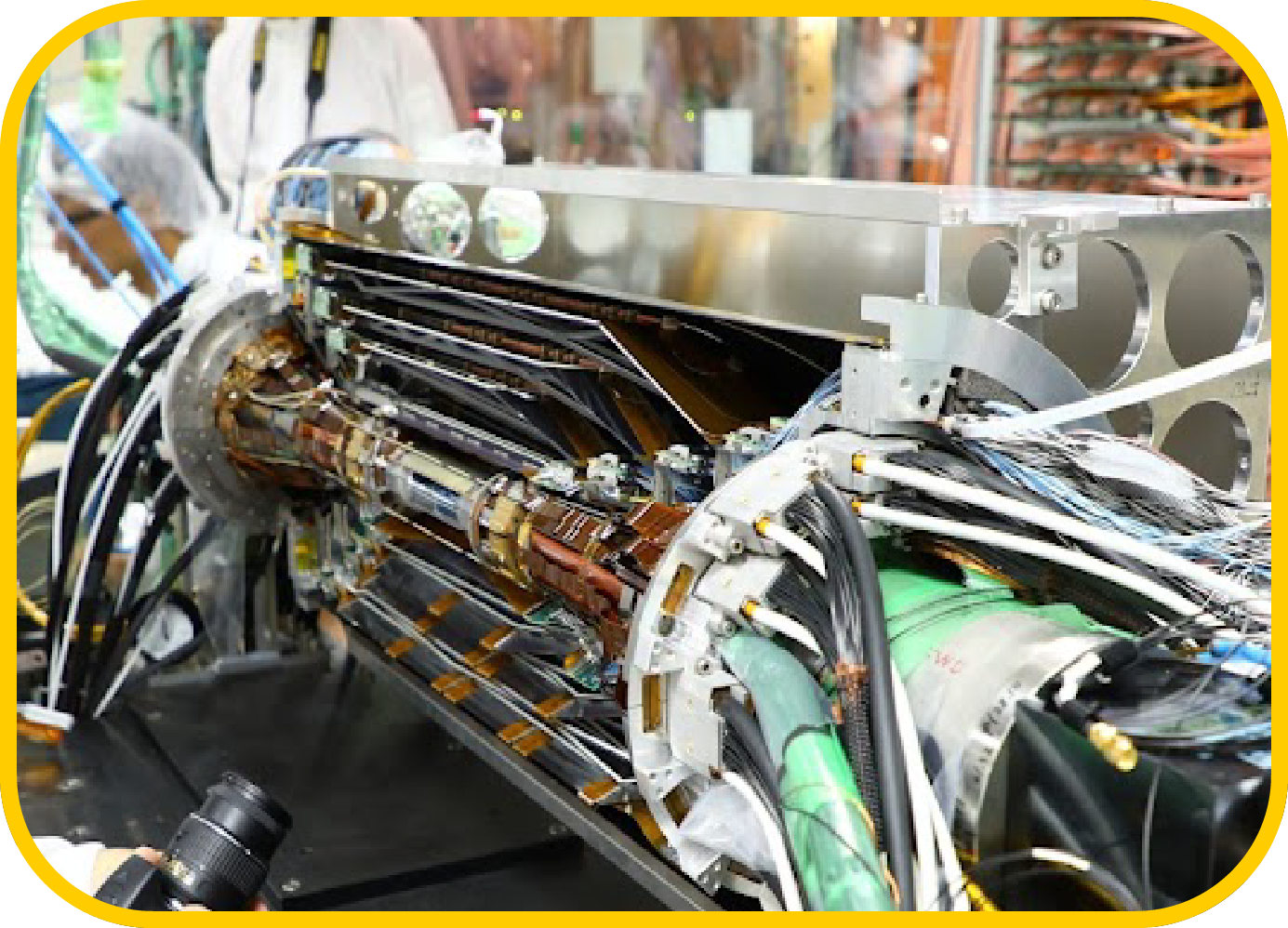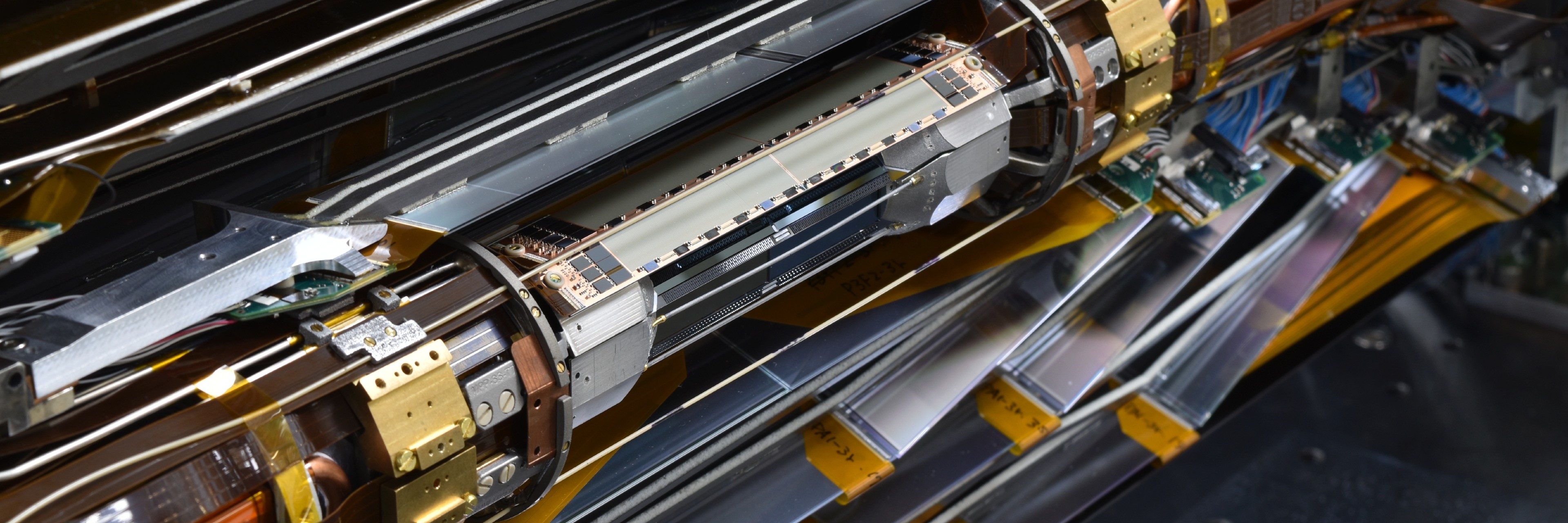The heart of the Belle II experimental facility is the detector complex, which consists of various layers of detector planes and is centered around the highly sensitive Pixel Vertex Detector (PXD). The development and construction of the small but technically highly complex PXD is a special achievement of the German groups.
Detector development is a continuous process at SuperKEKB, as the particle accelerator itself is in a constant process of development and improvement, where in particular the luminosity, which is essential for the precession of the data, is to be further increased: In 2031, an integrated luminosity of 50 ab-1 is to be achieved. The steadily increasing beam currents, which are necessary to increase the particle events per time unit, pose a great challenge on the PXD detector, since it is installed very close - at a distance of only 14 mm - to the beam axis. The German team of experts constantly has to react with flexibility to new challenges. Figuratively speaking, the company is reminiscent of a ship that has to be rebuilt again and again on the high seas.
One particular challenge, for instance, is radiation leakage, which can lead to detector damage. Such a "leak" has previously been located by experimental beam tests and rendered harmless by the development of an early warning system. An additional challenge is the so-called beam background, which increases continuously with increasing beam strength. The beam background refers to events that do not originate from collision interactions and are therefore not physical events. The major challenge is to keep the beam background as low as possible in order to promote the discovery of relevant physical events, or to make it possible in the first place.
Closely related is the development and improvement of so-called triggers, i.e. trigger mechanisms for the physical events that form the data basis required for the physical analysis.
The triggers are responsible for discriminating the physical events from the background so that the events can be initially stored and later analyzed. The challenge is to reliably sort out the correct events. One of the focal points of the Belle II experiment is the discovery of new physics, for example in the field of dark matter - this requires the analysis of sometimes very rare decays. The triggers must therefore be able to detect and sort out these rare decays against the massive background. To this end, we are working on new triggers that are based on neural networks and should also recognize rare decays ever better.

Skill Box
The following skills are required to operate the pixel detector and develop the neural trigger:
- Basic understanding of the technology and operation of silicon pixel detectors and drift chambers for charged particle detection.
- Basic knowledge of "machine learning", in particular neural networks and their applications.
- Familiarity with modern programming languages like C++ and Python on Linux operating systems
- Ability to work in a team, good English skills and interest in working in globally distributed teams
